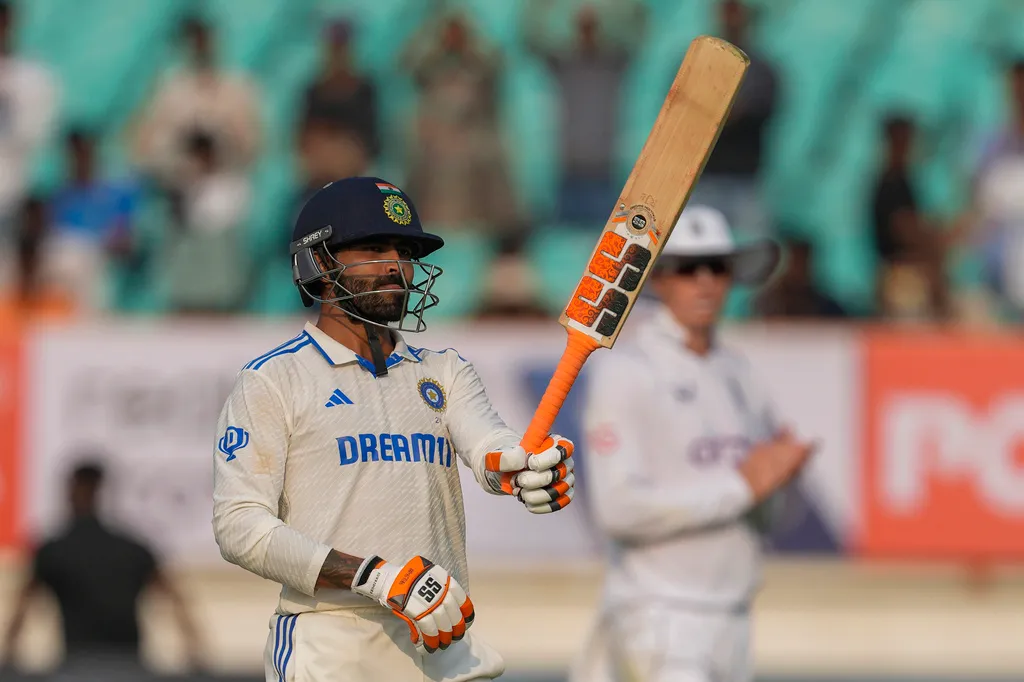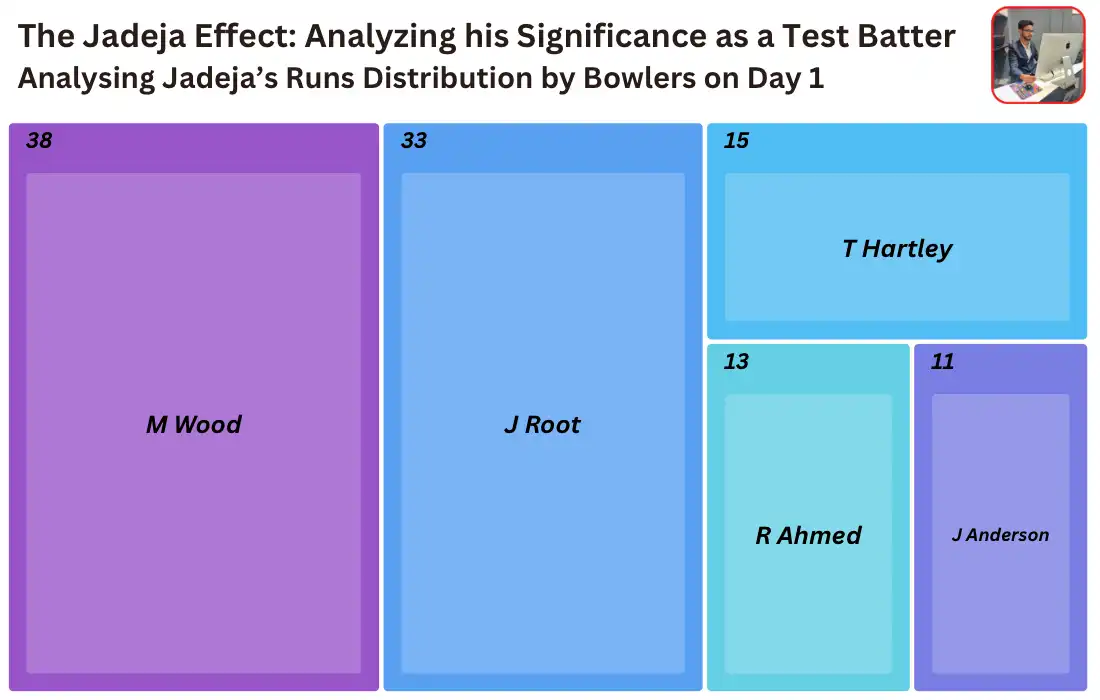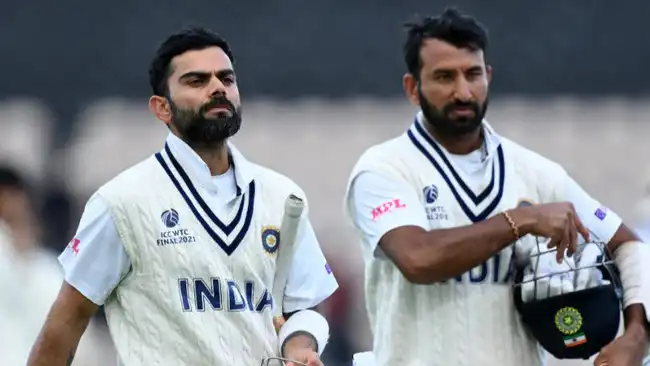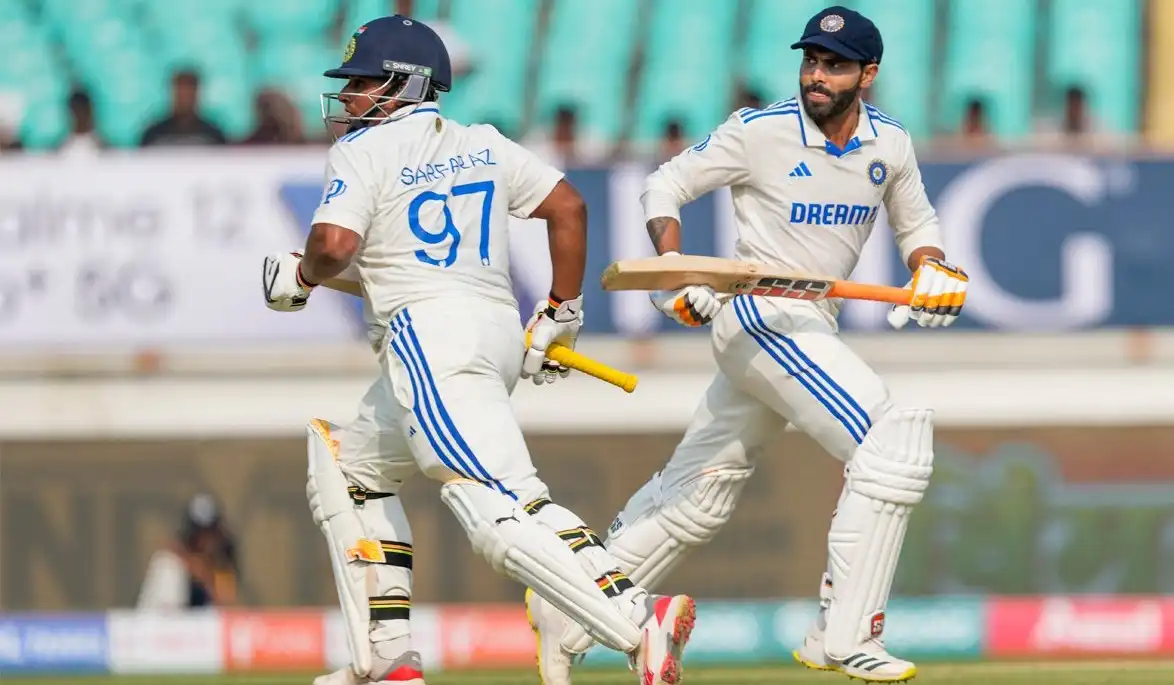 Ravindra Jadeja scored a century under pressure against England in the Third Test (Source: x.com)
Ravindra Jadeja scored a century under pressure against England in the Third Test (Source: x.com)
The first day of the third Test between India and England witnessed a dominant display by the Indian team, finishing at 326 for five at the Niranjan Shah Stadium. India faced early setbacks with the dismissals of Yashasvi Jaiswal (10) and Shubman Gill (0) to Mark Wood. However, captain Rohit Sharma played a captain's knock, registering a brilliant century and maintaining the team's momentum. The standout partnership of the day came between Rohit Sharma and Ravindra Jadeja, who was promoted up the order.
Their formidable 204-run collaboration for the fourth wicket added significant strength to India's innings. On the first day of the third Test between India and England, Rohit Sharma showcased his class by scoring his 11th Test century, making him the oldest Indian captain to achieve this feat. Following Rohit's impressive innings, debutant Sarfaraz Khan contributed significantly with a composed half-century on his Test debut, becoming the third fastest Indian to do so in men's Test cricket.
For More Such Reads, Click Here.
Ravindra Jadeja then stole the spotlight with his fourth Test hundred, scoring 110 runs, which marked his second century at the Rajkot ground. Additionally, Jadeja reached the milestone of 3000 Test runs in 70 matches, underscoring his all-round capabilities in the longest format of the game.
Jadeja's Dominance: A Closer Look at his Stellar Performance
 Analysing Jadeja’s Runs Distribution by Bowlers on Day 1
Analysing Jadeja’s Runs Distribution by Bowlers on Day 1
Ravindra Jadeja's ascent as a cricketer, notably in the realm of batting, has been conspicuous in recent times, and his pivotal role in the ongoing Test against England underscores his significance as a dependable middle-order batter. Entrusted with resurrecting India's innings at a precarious juncture when they were 33-3, Jadeja exhibited both resilience and finesse as he forged a substantial partnership alongside Rohit Sharma.
His measured aggression against the English bowlers, particularly a commanding performance against Mark Wood where he amassed 38 runs off 47 deliveries, exemplifies Jadeja's ability to rise to challenges and assert himself as a vital asset in the Indian batting lineup. Moreover, Jadeja's adept handling of prominent bowlers such as Joe Root and Tom Hartley, yielding scores of 33 and 15 runs, respectively, underscores his adaptability and effectiveness in confronting varying bowling styles.
Ravindra Jadeja's batting strategy in the ongoing Test against England heavily favored hitting on the leg side. Most of his runs, specifically 28, came from shots played towards mid-wicket, showing a clear intention to capitalize on scoring opportunities in that part of the field. He also scored well through the long-on region, gathering 27 runs, and demonstrated versatility by adding 16 runs through square leg. Despite focusing on the leg side, Jadeja managed to contribute 12 runs on the off side through the cover region. This approach highlights his skill in shot selection and understanding of the game.
Conclusion
Ravindra Jadeja's performance in the ongoing Test against England after the end of Day 1 has been a masterclass in resilience and adaptability. Coming in when India was struggling at 33-3, Jadeja played a crucial role in stabilizing the innings. His partnership with Rohit Sharma, particularly against the threat posed by Mark Wood, demonstrated his ability to counter aggressive bowling.
Jadeja strategically targeted the leg side, scoring the majority of his runs through mid-wicket and long-on regions. His innings not only rescued India from a precarious situation but also showcased his growing stature as a reliable batter capable of thriving under pressure. As the match unfolds, Jadeja's contribution becomes integral to India's fortunes in the series.






